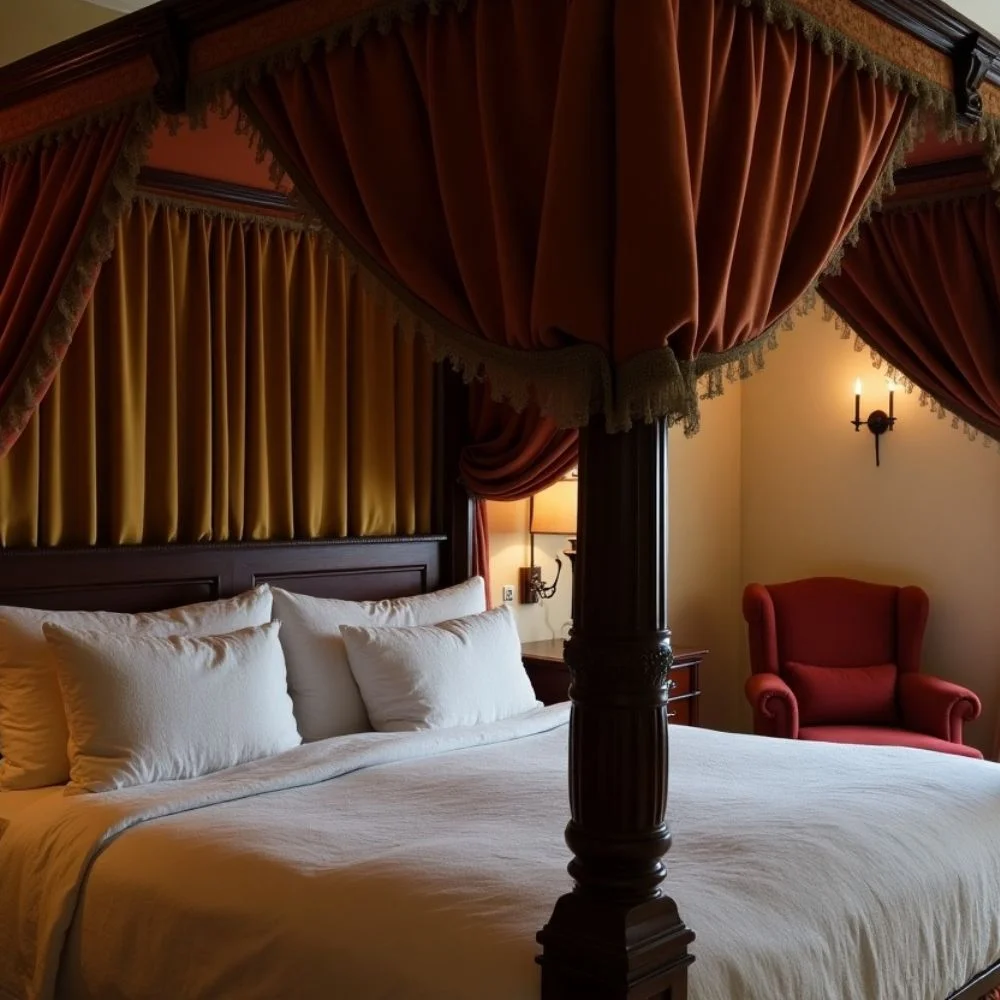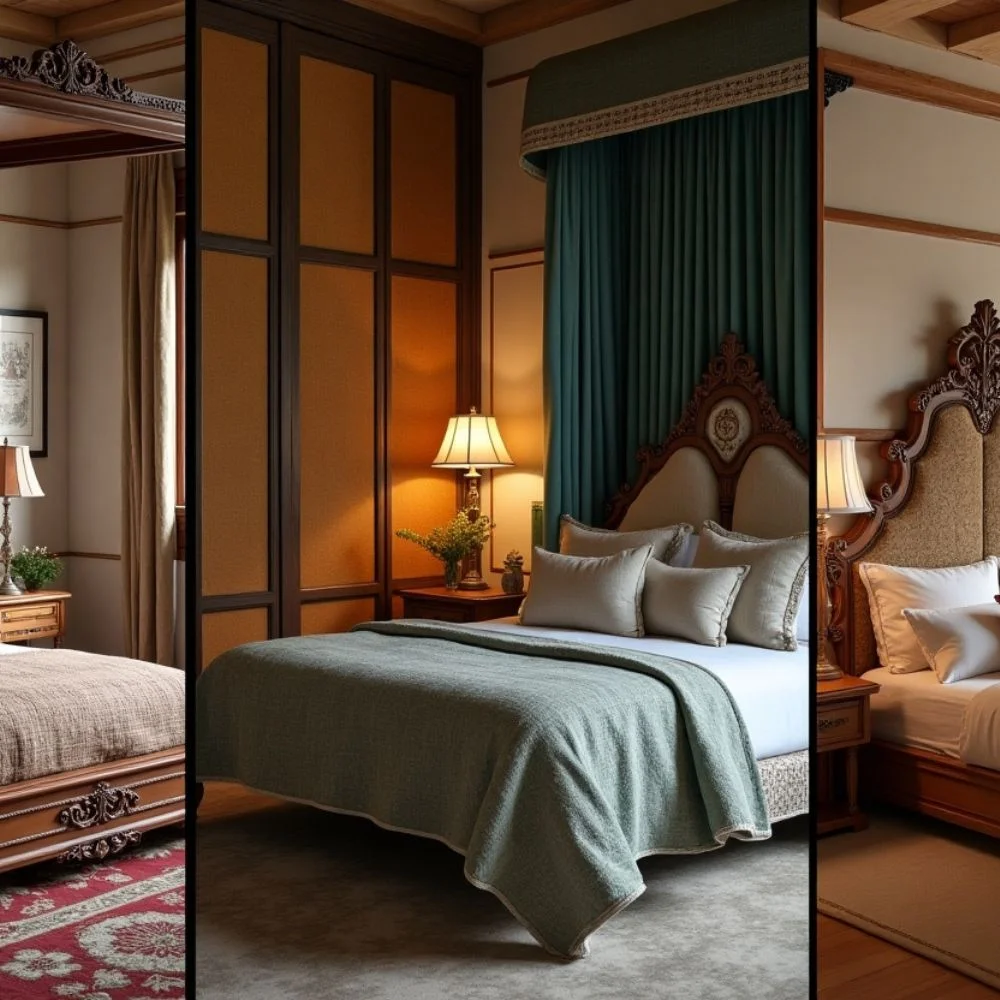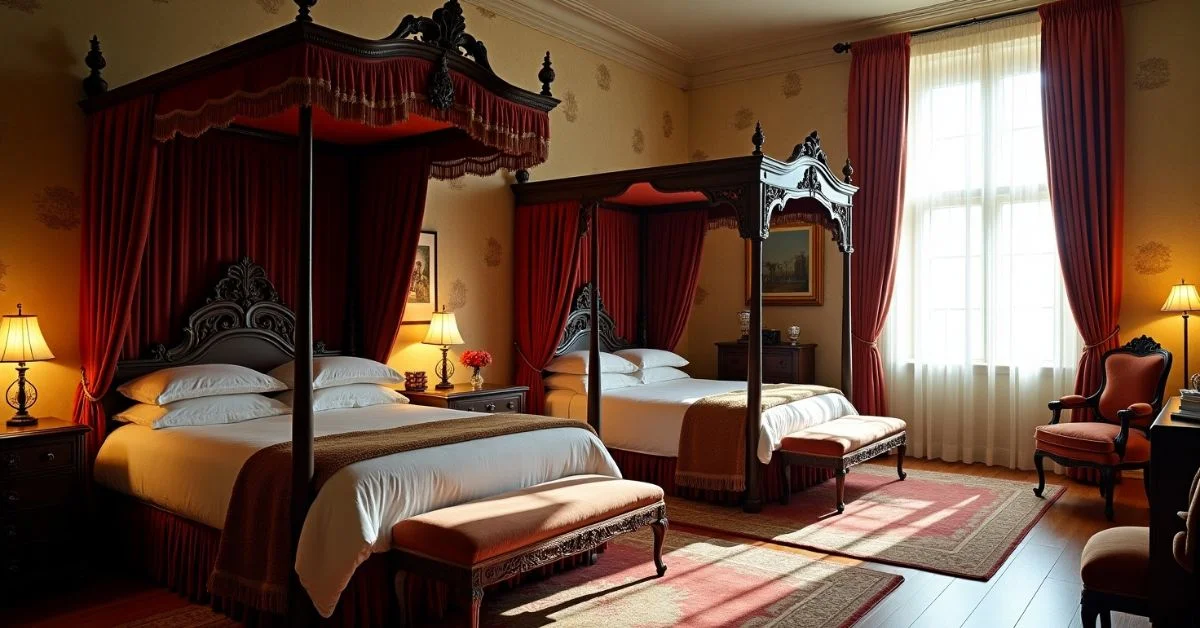Table of Contents
- Timeless Beauty in Bedroom Furniture
- The Four-Poster Bed
- The Canopy Bed
- The Sleigh Bed
- The Lit à la Polonaise
- The Lit à la Turque
- The Trundle Bed
- The Daybed
- Materials and Craftsmanship of Historical Beds
- Cultural Meaning Behind Bed Styles
- Why Historical Beds Still Inspire Modern Design?
- Tips to Bring Historical Aesthetics into Modern Homes
- Conclusion
Timeless Beauty in Bedroom Furniture
Beds are more than just a place to sleep. They tell stories of royalty, cultures, eras, and human creativity. Over time, bed designs evolved with society, reflecting changing lifestyles, materials, and cultural influences. From the grandeur of royal four-posters to the elegant simplicity of sleigh beds, these historical designs still shape what we consider beautiful and cozy today.
Whether you’re decorating your bedroom or just love vintage design, understanding the roots of aesthetic beds can help you bring timeless charm into your personal space.
The Four-Poster Bed
The four-poster bed is one of the most iconic bed styles in history. As the name suggests, this bed has four vertical columns, one at each corner, which often support a canopy or curtain.
This style gained popularity in Europe during the 16th century, especially among royalty and noble families. The curtains served a practical purpose, keeping warmth in and insects out, but they also added privacy and a regal appearance.
Key features of the four-poster bed:
- Tall wooden posts at all four corners
- Often made of heavy oak or mahogany
- Intricate carvings and moldings
- Drapes or fabric curtains hanging from rods
Today, four-poster beds are seen as a symbol of elegance. Many modern versions keep the tall posts and use lighter fabrics or sleek frames for a contemporary look.
The Canopy Bed
Closely related to the four-poster, the canopy bed takes elegance to another level. It features a frame over the bed that holds fabric, forming a roof-like cover or drapery overhead.
Originating in medieval Europe, canopy beds were first used for warmth and privacy, especially when servants slept in the same room as nobility. Over time, these beds became more ornate and romantic, especially during the Renaissance.
Typical elements of a canopy bed:
- A rectangular frame above the mattress
- Fabric draped over the top and sides
- Often decorated with tassels or lace
- Sometimes includes a headboard and a footboard
Modern designers have revived the canopy bed using clean lines and sheer fabrics to create a cozy, dreamy bedroom environment.

The Sleigh Bed
The sleigh bed dates back to the early 19th century and draws inspiration from French Empire style. Its name comes from its curved shape, resembling an old-fashioned horse-drawn sleigh.
This bed is known for its distinctive scroll-shaped headboard and footboard, usually made of solid wood.
What makes the sleigh bed special?
- Curved head and footboards
- Hefty wood construction
- Simple yet bold silhouette
- Excellent for both vintage and modern themes
While sleigh beds are traditionally made of dark wood, modern ones can be upholstered or crafted in metal to suit different interior styles.
The Lit à la Polonaise
This charming bed style came into fashion in 18th-century France, during the Rococo period. The lit à la Polonaise is a smaller canopy bed, often oval-shaped, with a domed crown in the middle and curtains that drape from all sides.
Unlike the large rectangular canopy beds of earlier centuries, the Polonaise bed is softer and more playful in its aesthetic.
Defining traits:
- Rounded or domed top frame
- Rich drapery in pastel colors
- Detailed wood carvings
- Curvy, feminine shape
This bed style is perfect for romantic and vintage-inspired bedrooms and continues to influence boutique hotel design and luxury home decor.
The Lit à la Turque
As global trade and cultural exchange expanded, bed designs began reflecting international styles. The lit à la Turque, or “Turkish Bed,” became popular in France in the 18th century. It features a side-curved headboard and footboard, often set against a wall, creating a sofa-like appearance.
This bed blends aesthetics from the Ottoman Empire with European tastes.
Features of the Turkish bed:
- Curved headboard and footboard on one side
- Upholstered backrest
- Usually placed lengthwise against a wall
- Lavish textiles and fringe detailing
The lit à la Turque makes an elegant statement in lounges, reading nooks, or guest bedrooms. Its daybed-like appearance allows it to serve both functional and decorative roles.
The Trundle Bed
Although not as luxurious as other historical beds, the trundle bed has its own charm and legacy. First seen in the 16th century, trundle beds are space-saving units with a second mattress tucked underneath.
Often used in servants’ quarters or children’s rooms, they were valued for practicality. But modern design has elevated the humble trundle into a smart solution for small homes.
Why trundle beds remain relevant:
- Space-saving and flexible
- Great for guest rooms or kids’ rooms
- Can be styled to look vintage or modern
- Often comes in wood or metal frames
The trundle bed’s simplicity and utility continue to inspire modern bedroom design, especially in apartments and multi-use spaces.
The Daybed
Daybeds are one of the most versatile historical bed types. Popular since the Roman Empire, the daybed combines seating and sleeping in one piece.
Used in parlors, verandas, and bedrooms, daybeds have evolved with each century, shifting from stately wooden lounges to sleek, metal-framed versions.
Characteristics of a daybed:
- Backrest on one long side
- Can be styled as a couch
- Accommodates single-size mattresses
- Ideal for small spaces or multi-use rooms
Today’s daybeds are popular in studio apartments, guest rooms, and even outdoor patios, proving their enduring appeal.
Materials and Craftsmanship of Historical Beds
Older bed designs showcase high levels of craftsmanship and attention to detail. These beds were made to last generations and were often handcrafted.
Common materials:
- Solid woods like oak, walnut, or mahogany
- Bronze, brass, or wrought iron frames
- Cotton, silk, velvet, or linen drapery
- Hand-carved details and ornate moldings
Even in simpler models like trundles or daybeds, materials were chosen for durability and aesthetics. This deep focus on material quality continues to influence luxury furniture today.
Cultural Meaning Behind Bed Styles
- In many cultures, bed design was tied to status, tradition, and personal values.
- European nobility used tall four-poster beds as symbols of power and privacy.
- French Rococo society leaned toward romantic, feminine bed styles.
- Ottoman influence introduced more relaxed and layered textile designs.
- Asian traditions favored low-platform beds and minimalist designs.
Beds were not only functional; they expressed identity, wealth, and even spiritual beliefs. This cultural richness adds depth to historical bed aesthetics.

Why Historical Beds Still Inspire Modern Design?
Many of today’s most popular bed designs borrow elements from the past. Why? Because these styles have proven timeless. They balance beauty with function and evoke a sense of nostalgia or luxury.
Interior designers often mix historical silhouettes with modern materials to create hybrid designs. For example:
- Sleigh beds with minimalist curves
- Four-poster beds with clean, matte finishes
- Daybeds with mid-century modern legs
These styles connect people to history while suiting modern needs.
Tips to Bring Historical Aesthetics into Modern Homes
If you love vintage beds but have a modern home, here are a few simple ways to bring the charm of historical beds into your space:
- Choose reproduction pieces that blend old styles with new finishes
- Use vintage textiles like lace, velvet, or brocade for bedding
- Add drapery or canopies over a standard bed for that royal feel
- Opt for wood furniture with visible grain or carving
- Use antique nightstands or headboards to mix old with new
Even a single item, like a carved wooden headboard or floral bedspread, can give your bedroom a historical touch.
Conclusion
Historical bed designs continue to inspire us because they blend elegance, story, and craftsmanship. Whether you admire the royal flair of a canopy bed or the simplicity of a trundle, each design carries a legacy. In a world filled with fast furniture and ever-changing trends, these time-tested bed styles offer stability, beauty, and character. Embracing the past doesn’t mean copying it exactly; it means learning from it, borrowing its best ideas, and shaping them to fit today’s lifestyle. So if you’re looking to turn your bedroom into a place of true comfort and timeless style, take a step back in time. The perfect bed might just be one that’s centuries old but still completely at home in your life.







